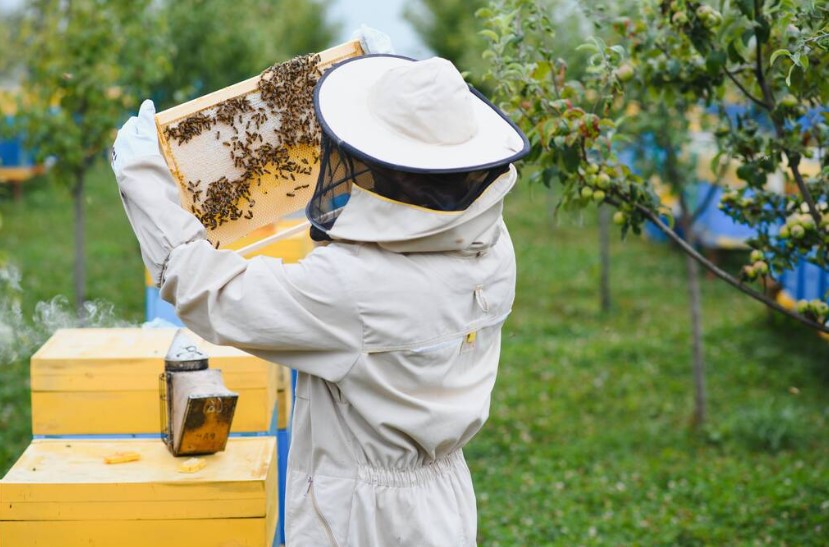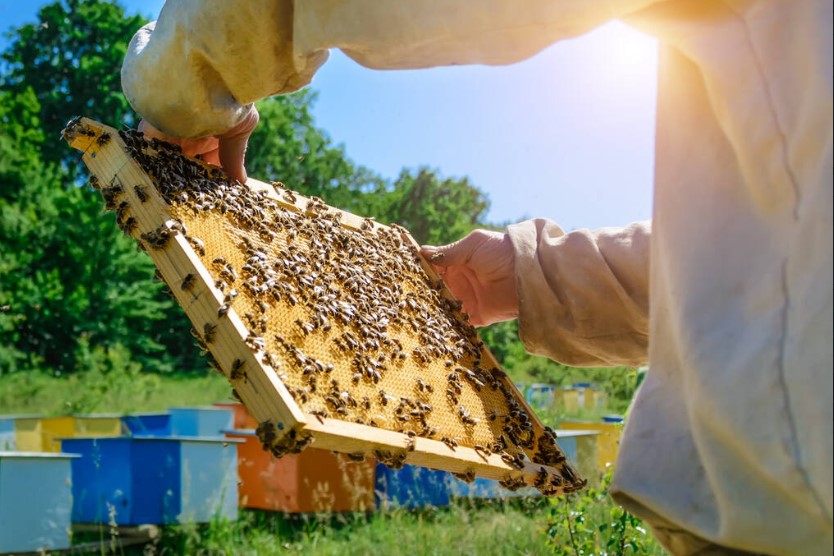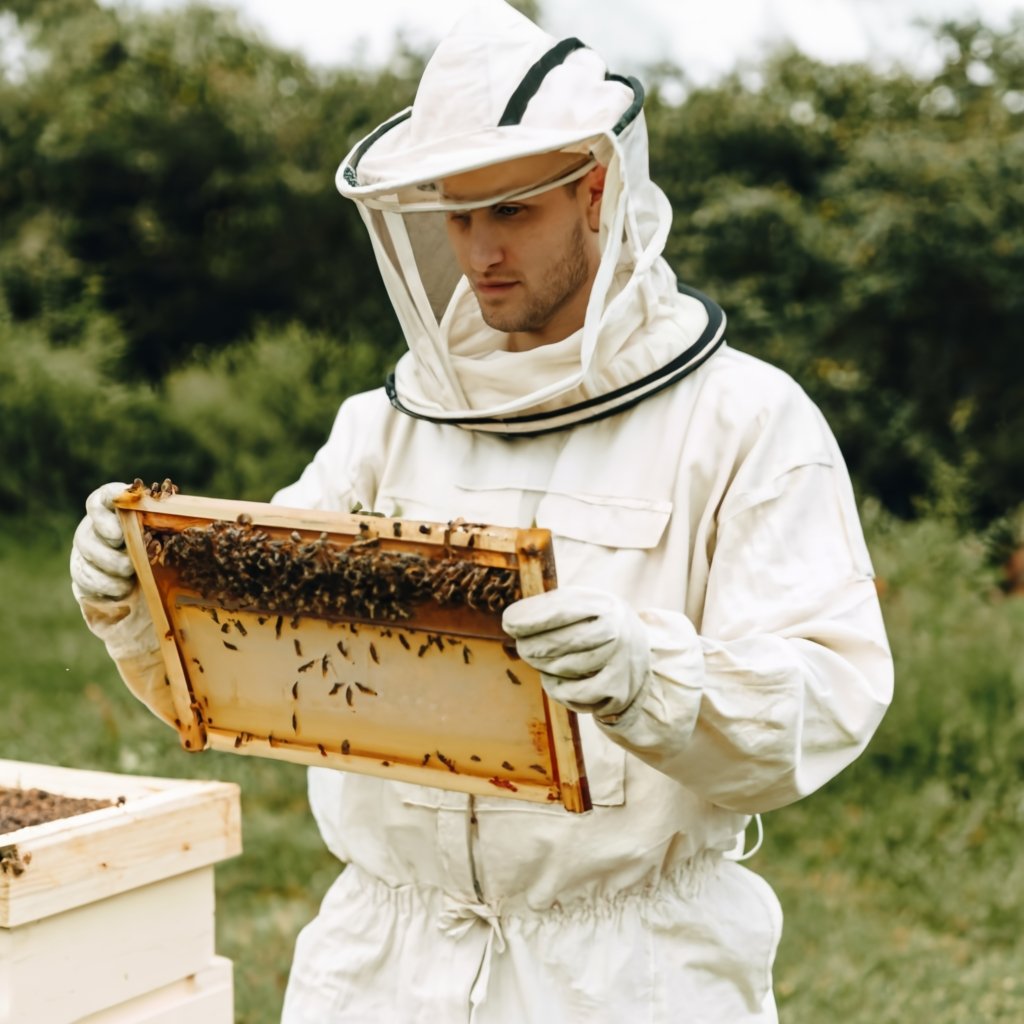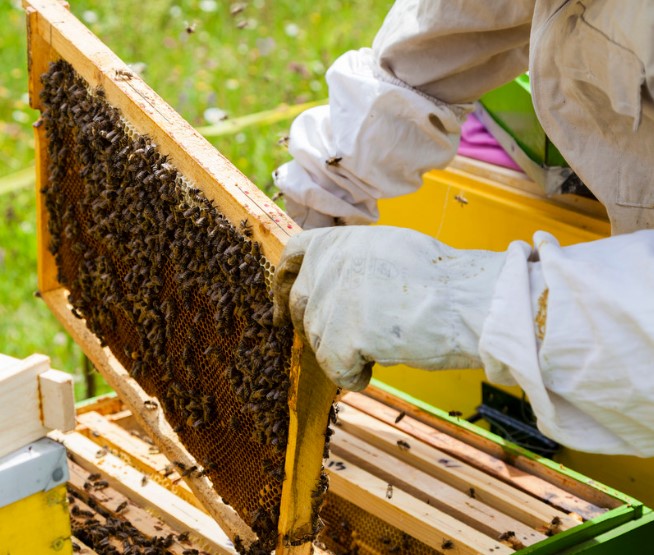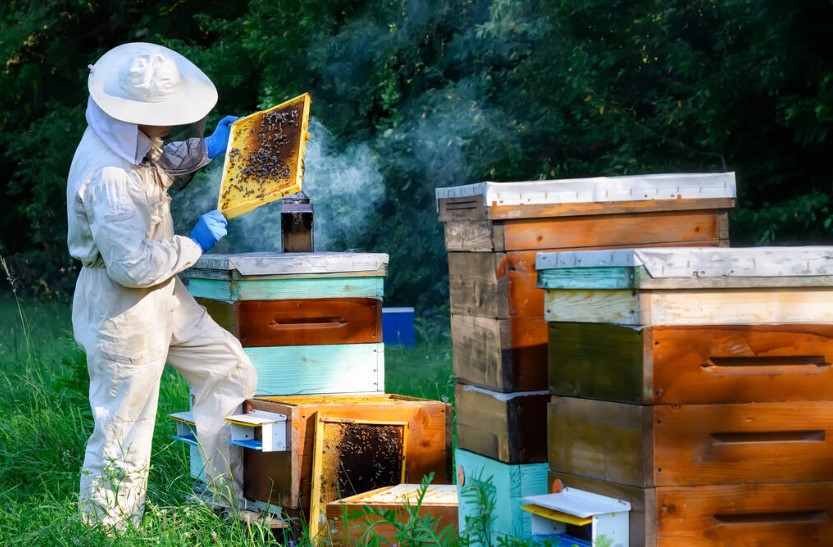Bee Suits
Ready to take your beekeeping to the next level? Explore our collection of professional bee suits and find your perfect match today!
Essential Overview of Beekeeping Suits: Materials, Features, and Types
Table of Contents
- 1 Bee Suits
- 1.1 Essential Overview of Beekeeping Suits: Materials, Features, and Types
- 1.2 Key Features About Bee Suits
- 1.3 Types of Bee Suits
- 1.4 Materials and Construction
- 1.5 Features
- 1.6 Maintenance and Care
- 1.7 Environmental and Health Considerations
- 1.8 Choosing the Right Suit
- 1.9 Safety and Effectiveness
- 1.10 Conclusion
- 1.11 BEE SUITS – FAQs
- 1.11.1 What are bee suits made of?
- 1.11.2 How do I choose the right size bee suit?
- 1.11.3 Can bee suits completely protect against stings?
- 1.11.4 How often should bee suits be washed?
- 1.11.5 What features are important in a bee suit?
- 1.11.6 Are there bee suits for children?
- 1.11.7 How do I maintain my bee suit?
- 1.11.8 Is ventilation important in a bee suit?
- 1.11.9 What's the difference between a bee jacket and a full bee suit?
- 1.11.10 How do I ensure my bee suit is bee-proof?
- 1.11.11 Can I repair a torn bee suit?
- 1.11.12 Are there different types of bee veils?
- 1.11.13 What should I wear under my bee suit?
- 1.11.14 Are bee suits one-size-fits-all?
- 1.11.15 How do I put on a bee suit?
- 1.11.16 Can bee suits be used for other purposes?
- 1.11.17 What is the lifespan of a bee suit?
- 1.11.18 Are there bee suits with built-in gloves?
- 1.11.19 How important is the color of a bee suit?
- 1.11.20 Can bee suits be customized?
- 1.11.21 How do I store my bee suit when not in use?
- 1.11.22 What are the signs that I need a new bee suit?
- 1.11.23 Are beekeeping suits unisex?
- 1.11.24 Can bee suits be recycled or repurposed?
- 1.11.25 How should I dispose of an old bee suit?
Bee suits are an indispensable tool for beekeepers, designed to provide protection against bee stings while ensuring comfort and flexibility during hive management. The primary material used in these suits is a blend of cotton and synthetic fibers, offering a balance between durability and breathability. This combination is crucial as it prevents stings from reaching the skin while allowing air to circulate, reducing the risk of overheating, especially in warmer climates. The color of bee suits is typically light, often white or beige, which is strategic: these colors are less likely to provoke bees and are better at reflecting sunlight, keeping the beekeeper cooler.
One of the key features of a bee suit is the veil. It comes in various styles—round, fencing, and square—each designed to offer good visibility and protection from stings around the most vulnerable areas, such as the face and neck. The veils are usually made from a fine mesh that maintains visibility while ensuring bees cannot penetrate it. Additionally, bee suits are equipped with secure closures such as zippers, Velcro, or elastic bands, which are essential to prevent bees from entering the suit. The cuffs and ankles are often elasticated, further enhancing the protective seal. Many bee suits also feature pockets, which are handy for carrying tools or personal items during beekeeping activities. Importantly, despite their protective nature, bee suits are designed to allow freedom of movement, ensuring beekeepers can perform tasks without restriction. This combination of features underscores the suit’s role in safeguarding the beekeeper while facilitating efficient hive management.
Key Features About Bee Suits
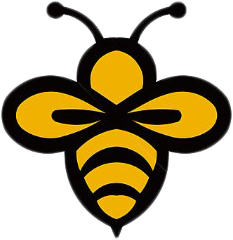
Material Composition: A blend of cotton and synthetic fibers, offering a balance between durability and breathability.

Protective Layering: Some suits incorporate foam or other materials for additional sting resistance.

Color: Predominantly light colors like white or beige to be less provocative to bees and to reflect heat.

Veil Styles: Round, fencing, or square veils made from fine mesh for visibility and protection.

Ventilation Panels: Integrated in some suits for better air circulation, essential in warm climates.

Secure Closures: Zippers, Velcro, or elastic bands to ensure the suit is bee-proof and secure.

Elastic Cuffs and Ankles: Prevent bees from entering the suit, essential for full protection.

Pockets: Functional pockets for carrying tools and personal items during beekeeping tasks.

Hood Design: Hoods that provide good visibility and can be easily attached or detached from the suit.

Ease of Movement: Suits should allow freedom of movement for comfortable working.

Washability: Easy-to-clean materials that maintain integrity and protection level after washing.

Durability: Quality construction to withstand regular use and exposure to outdoor conditions.

Size and Fit Options: Availability of various sizes and fits to accommodate different body types and preferences.

Allergen Consideration: Suitable for individuals with allergies, offering higher levels of protection.

Environmental Impact: Options for eco-friendly materials and sustainable production practices.
Types of Bee Suits
Full Suits
Cover the entire body and usually include a veil.
Bee Jackets
Cover the upper body only, suitable for quick inspections or in less intense beekeeping environments.
Children’s Suits
Specifically designed for children, with the same protective features as adult versions.
Materials and Construction
Fabric
Most bee suits are made from a blend of cotton and synthetic fibers. This combination provides durability, breathability, and protection. Some high-end suits use ventilated fabrics or foam layers for added sting resistance.
Color
Light colors such as white or beige are common, as they are less provocative to bees and reflect sunlight, keeping the wearer cooler.
Veils
Veils are usually made from a fine mesh to ensure visibility and protection. Different styles include round, fencing, and square veils.
Protect yourself with our top-of-the-line bee suits – click here to experience unparalleled safety and comfort in beekeeping!
Features

Ventilation: Key for comfort, especially in warmer climates. Ventilated suits have panels that allow air to circulate, reducing overheating.

Closures: Zippers, Velcro, or elastic bands are used to secure the suit and prevent bees from entering.

Elastic Cuffs: Elastic bands at the wrists and ankles are crucial for keeping bees out.

Pockets: Useful for carrying tools and personal items.
Maintenance and Care

Washing: Regular washing (according to manufacturer instructions) is necessary to maintain the integrity of the fabric and remove bee attractants.

Storage: Store in a dry, cool place, preferably in a breathable garment bag.

Repair: Minor tears can be repaired with repair kits or durable tapes; larger damages might require professional mending.
Environmental and Health Considerations
Eco-friendly Options
Some suits are made from organic or recycled materials, catering to environmentally conscious users.
Allergies
Individuals with bee sting allergies should choose suits with higher protection levels and ensure no gaps in the suit.
Choosing the Right Suit
Size and Fit
Ensure the suit allows for movement and layering. Consult manufacturer’s sizing charts.
Purpose
Consider the intensity of beekeeping activities. Full suits are preferable for extensive hive management, while jackets might suffice for lighter work.
Safety and Effectiveness
Protection Level
No suit is entirely sting-proof, but quality suits offer significant protection.
Visibility
Clear visibility through the veil is important for safety and ease of work.
Conclusion
Bee suits are an essential tool for beekeepers, providing a balance between protection and functionality. Understanding the various features, materials, and types of suits available is crucial for making an informed decision. Regular maintenance and proper storage will extend the life of a bee suit, ensuring safety and comfort during beekeeping activities. As beekeeping practices and technology evolve, so do the features and capabilities of bee suits, making it important for beekeepers to stay informed about new developments in this essential gear.
BEE SUITS – FAQs
What are bee suits made of?
Bee suits are typically made from a blend of cotton and synthetic fibers, providing a balance of breathability, comfort, and protection. Some high-end suits may also feature ventilated fabrics or special materials like foam for added sting resistance.
How do I choose the right size bee suit?
Choosing the right size involves measuring your body and comparing it to the manufacturer’s sizing chart. Ensure the suit allows for comfortable movement and layering of clothes underneath.
Can bee suits completely protect against stings?
While bee suits offer significant protection, they are not 100% sting-proof. The thickness of the material and the tightness of the closures play a crucial role in protection levels.
How often should bee suits be washed?
Bee suits should be washed regularly, depending on usage frequency. Regular washing helps maintain the fabric’s integrity and removes any attractants that might provoke bees.
What features are important in a bee suit?
Key features include durability, ventilation, visibility through the veil, comfortable fit, secure closures, and elastic cuffs at wrists and ankles to prevent bees from entering.
Are there bee suits for children?
Yes, there are bee suits specifically designed for children, featuring the same protective qualities as adult suits but in smaller sizes.
How do I maintain my bee suit?
Maintain your bee suit by washing it according to the manufacturer’s instructions, storing it in a dry place, and checking regularly for any tears or weak points.
Is ventilation important in a bee suit?
Yes, ventilation is crucial for comfort, especially in warm climates, as it helps to regulate body temperature and reduce sweating.
What's the difference between a bee jacket and a full bee suit?
A bee jacket is a shorter version of a full suit, offering protection for the upper body only, while a full suit covers the entire body for more comprehensive protection.
How do I ensure my bee suit is bee-proof?
Ensure all zippers and closures are secure and check for any gaps or holes in the fabric. Elastic cuffs and ankles should fit snugly to prevent bees from entering.
Can I repair a torn bee suit?
Yes, small tears can be repaired with special bee suit repair kits or durable tape, but larger damages might require professional mending or replacement.
Are there different types of bee veils?
Yes, there are several types, including round, fencing, and square veils, each offering different levels of visibility and protection.
What should I wear under my bee suit?
It’s recommended to wear light, comfortable clothing that covers your skin completely to add an extra layer of protection.
Are bee suits one-size-fits-all?
No, bee suits come in various sizes to accommodate different body types. It’s important to choose a suit that fits well for both comfort and safety.
How do I put on a bee suit?
Start by wearing appropriate clothing underneath, then step into the suit, pull up the zippers, and ensure all closures are securely fastened.
Can bee suits be used for other purposes?
While primarily designed for beekeeping, bee suits can be used in other scenarios requiring protection from insects, like in certain types of pest control.
What is the lifespan of a bee suit?
The lifespan depends on the quality of the material and frequency of use but typically ranges from a few years to several years with proper care.
Are there bee suits with built-in gloves?
Some bee suits come with attached gloves, but most have separate gloves to provide flexibility and better fit.
How important is the color of a bee suit?
While not crucial, lighter colors like white or beige are preferred as they are less likely to provoke bees and keep cooler in sunlight.
Can bee suits be customized?
Some manufacturers offer customization options for size, color, and additional features like extra pockets or reinforced areas.
How do I store my bee suit when not in use?
Store your bee suit in a cool, dry place, away from direct sunlight and chemicals, and ideally in a breathable garment bag.
What are the signs that I need a new bee suit?
Signs include noticeable wear and tear, reduced flexibility, fading, or if the suit no longer provides adequate protection.
Are beekeeping suits unisex?
Most beekeeping suits are unisex, though some brands offer gender-specific designs for a better fit.
Can bee suits be recycled or repurposed?
Depending on the material, old bee suits can be recycled or repurposed for other uses, like garden work.
How should I dispose of an old bee suit?
Dispose of old bee suits by checking if they can be recycled, donated (if still in good condition), or disposed of as general waste if too damaged.


